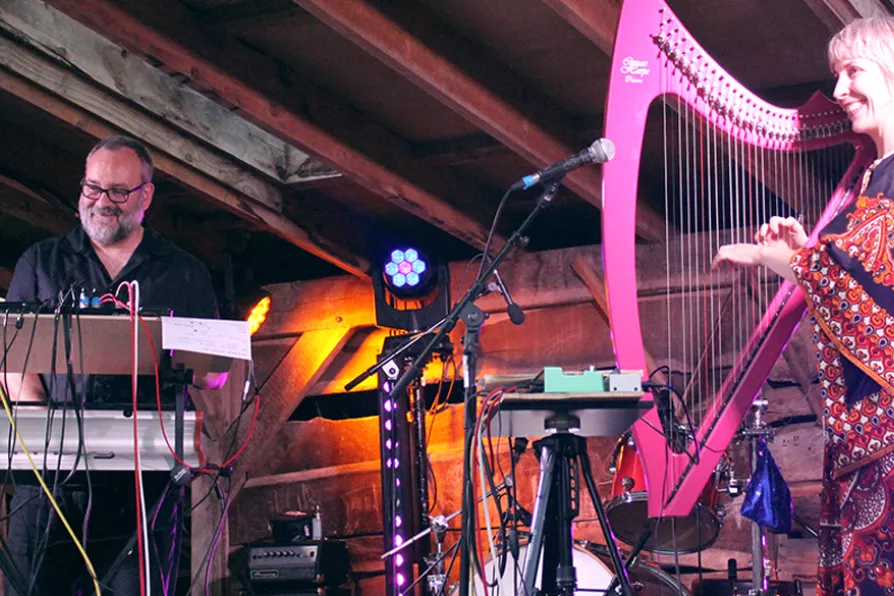KEN COCKBURN assesses the art of Ian Hamilton Finlay for the experience of warfare it incited and represents
Big surprise in the woods
GEORGE FOGARTY recommends a festival that is both small enough to visit with young kids, and big enough to host musical and humanitarian ambitions

 EXHILARATING: English-Turkish instrumental duo Masal
EXHILARATING: English-Turkish instrumental duo Masal
Wood Festival
Braziers Park, Oxfordshire
GOING to a music festival with young children, as I learnt some time ago, is not generally a relaxing experience. Parenting is hard enough as it is, without attempting it in rivers of mud, while carrying your home on your back, queueing endlessly and having to miss your favourite band because your little darling has suddenly decided they do actually now want that pizza they insisted they didn’t want 20 minutes earlier.
Wood Festival is not like that. It’s small enough that everything is close by, kids can find their way around easily, and unless you’re an inch from the bass bin, the music is never ear-splitting.
Similar stories

WILL STONE relishes the subtle demonstations of political awareness that accompany two standout performers at Brighton’s Mutations festival

STEVE JOHNSON, CHRIS SEARLE and KEVIN BRYAN review new releases from Brooks Williams and Aaron Catlow, Kris Davis Trio, PP Arnold, Rum Ragged, David Virelles, Mark Harrison Band, Linda Moylan, Catriona Bourne, Julie Driscoll, Brian Auger & The Trinity

This is music that brings the party, the catharsis and the love all at once, says GEORGE FOGARTY

New releases from Jessica Pratt, Oisin Leech and Bill Frisell









